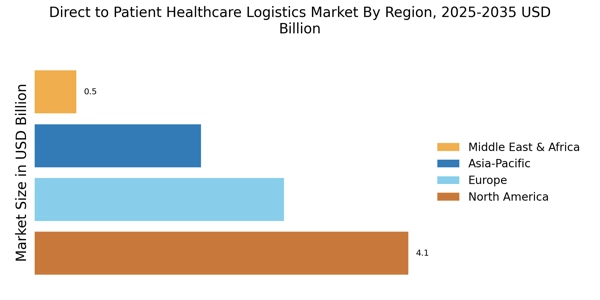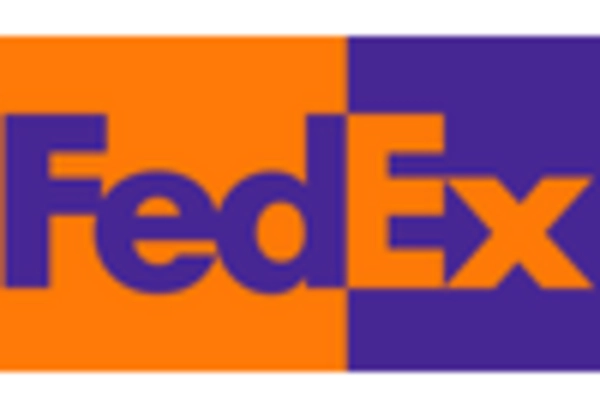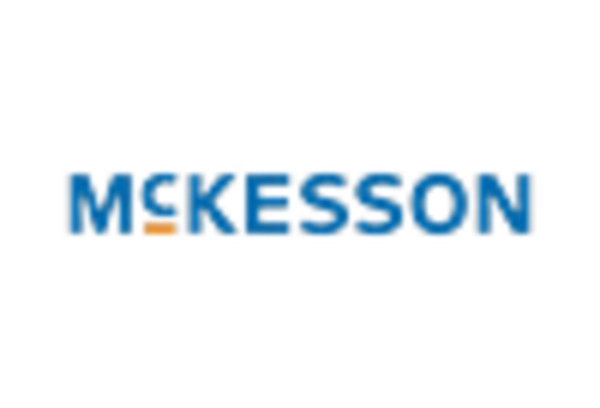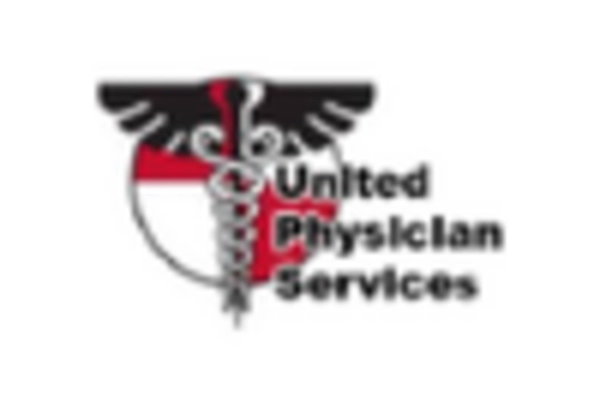Expansion of E-commerce in Healthcare
The Direct to Patient Healthcare Logistics Market is significantly influenced by the rapid expansion of e-commerce within the healthcare sector. The convenience of online ordering for pharmaceuticals and medical supplies has transformed patient access to essential products. Recent statistics suggest that the e-pharmacy market is expected to grow at a compound annual growth rate of 17.4% from 2021 to 2028. This growth compels logistics providers to develop specialized services that cater to the nuances of e-commerce, such as last-mile delivery and real-time tracking. As patients increasingly turn to online platforms for their healthcare needs, the logistics industry must adapt to ensure seamless and efficient delivery processes.
Increased Demand for Home Healthcare Services
The Direct to Patient Healthcare Logistics Market is experiencing a notable surge in demand for home healthcare services. This trend is driven by an aging population and a growing preference for receiving care in the comfort of one's home. According to recent data, the home healthcare market is projected to reach USD 173 billion by 2026, indicating a robust growth trajectory. This shift necessitates efficient logistics solutions to ensure timely delivery of medical supplies and medications directly to patients' residences. As healthcare providers adapt to this demand, the logistics sector must innovate to meet the unique challenges posed by home delivery, including temperature control and secure handling of sensitive medical products.
Regulatory Support for Direct Delivery Models
The Direct to Patient Healthcare Logistics Market benefits from increasing regulatory support for direct delivery models. Governments and health authorities are recognizing the importance of facilitating direct access to healthcare products, which has led to the implementation of favorable policies. For instance, regulations that streamline the approval process for telehealth services and home delivery of medications are becoming more prevalent. This regulatory environment encourages logistics companies to invest in infrastructure and technology that enhance their capabilities in direct-to-patient delivery. As these policies evolve, they are likely to create a more conducive landscape for the growth of the logistics sector, ultimately improving patient access to healthcare.
Rising Consumer Expectations for Delivery Speed
The Direct to Patient Healthcare Logistics Market is increasingly shaped by rising consumer expectations for delivery speed. Patients now expect prompt access to medications and healthcare products, often demanding same-day or next-day delivery services. This shift in consumer behavior is prompting logistics providers to enhance their operational capabilities to meet these expectations. Data indicates that 70% of consumers are willing to pay extra for faster delivery options, highlighting the importance of speed in the logistics sector. As competition intensifies, logistics companies are likely to invest in advanced technologies and streamlined processes to ensure timely deliveries, thereby positioning themselves favorably in the evolving healthcare landscape.
Technological Innovations in Supply Chain Management
The Direct to Patient Healthcare Logistics Market is being transformed by technological innovations in supply chain management. Advanced technologies such as artificial intelligence, blockchain, and the Internet of Things are being integrated into logistics operations to enhance efficiency and transparency. For example, AI-driven analytics can optimize delivery routes, while blockchain technology ensures the integrity of the supply chain by providing secure tracking of medical products. As these technologies become more prevalent, they are expected to reduce costs and improve service quality in the logistics sector. The adoption of such innovations is crucial for meeting the increasing demands of direct-to-patient services, thereby fostering growth in the logistics market.


















Leave a Comment